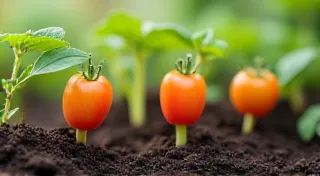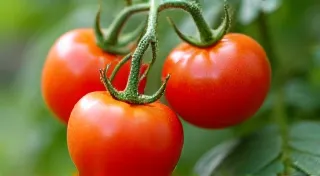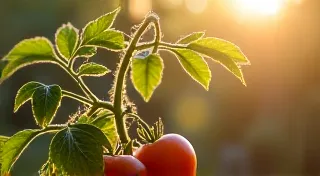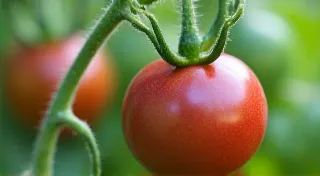Green Zebra Tomatoes: Growing in the Midwest – Challenges and Rewards
Green Zebra tomatoes are a truly unique addition to any heirloom tomato collection. Their striking appearance – a vibrant green base striped with dark green lines – is matched by their distinctive, tart flavor. But growing these beauties in the Midwest presents some specific considerations. This guide will explore the challenges and rewards of cultivating Green Zebra tomatoes in the region.
What are Green Zebra Tomatoes?
Green Zebra is an heirloom variety believed to have originated in Serbia. They're known for their slightly acidic, tangy flavor with hints of lemon and herbal notes. These tomatoes are typically medium-sized, averaging 3-4 inches in diameter, and ripen to a rich, deep green, often with a yellow blush when fully ripe. They're exceptionally versatile, excellent for salads, snacking, and even sauces (though their acidity needs to be considered).
The Midwest Growing Season: A Green Zebra Consideration
The Midwest climate, with its shorter growing season and fluctuating temperatures, can be a hurdle for many tomato varieties. Green Zebra, while generally resilient, isn't exempt from these challenges. Successful tomato cultivation in the Midwest, like with any region, relies on understanding the nuances of your soil and providing the right amendments. For a deeper dive into how different regions require tailored approaches, consider exploring resources like “Soil Amendments for Heirloom Tomatoes: A Regional Breakdown” to understand how to best prepare your growing medium.
Starting Seeds Early
To ensure a good harvest, starting Green Zebra seeds indoors 6-8 weeks before the last expected frost is highly recommended. This gives them a head start and allows them to mature enough to withstand any late-season frosts. Using a heat mat can improve germination rates.
Choosing the Right Location
Select a location that receives at least 6-8 hours of direct sunlight daily. The soil should be well-draining and rich in organic matter. Amend the soil with compost or aged manure before planting.
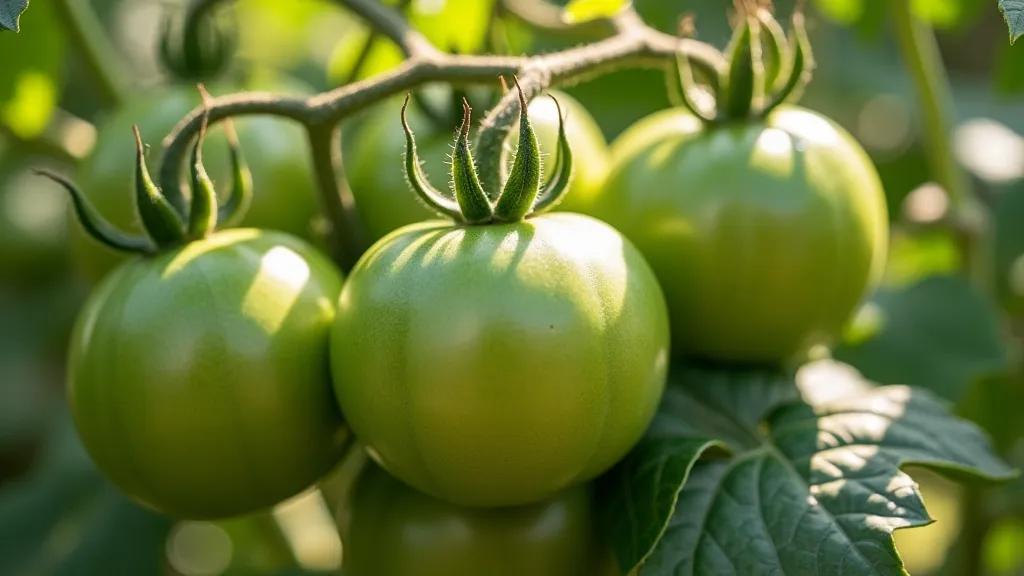
Common Challenges in the Midwest
- Short Growing Season: The late frost dates and early frost arrival in many Midwestern states require a jumpstart with seed starting.
- Temperature Fluctuations: Green Zebra tomatoes thrive in warm weather, but sudden temperature drops can stress the plants and affect fruit development. Use row covers or temporary shelters to protect plants from cold snaps.
- Disease Pressure: The humid conditions in the Midwest can promote fungal diseases like early blight and Septoria leaf spot. Ensure good air circulation around plants, water at the base of the plant, and consider preventative fungicide applications if necessary.
- Blossom Drop: Excessive heat or cold can cause blossom drop, reducing fruit production. Consistent watering and providing shade during extreme heat can help mitigate this issue.
- Supporting the Vine: As Green Zebra plants grow, their vines can become quite heavy and require robust support. The right tomato cage is crucial, and choosing one designed for the specific needs of heirloom varieties is important. If you're looking for guidance on selecting the appropriate support system for your region, check out "Choosing the Right Tomato Cage: A Regional Guide".
Tips for Success: Maximizing Your Green Zebra Harvest
- Staking or Caging: Green Zebra plants can grow quite large and require support to keep the fruit off the ground and prevent diseases.
- Pruning: While not strictly necessary, pruning suckers (the shoots that grow between the main stem and branches) can improve air circulation and direct energy towards fruit production.
- Fertilizing: Feed your plants regularly with a balanced tomato fertilizer, especially during flowering and fruiting.
- Watering: Consistent watering is key to preventing blossom end rot. Aim for about 1-2 inches of water per week.
- Understanding Regional Variations: The Midwest is a broad region, and growing conditions can vary significantly from state to state. While Green Zebra tomatoes generally thrive with similar care, the precise timing of planting and the ideal soil composition can differ. Growing Purple Cherokee tomatoes, another popular heirloom variety in the Northern Plains, showcases similar challenges. See "Purple Cherokee Tomatoes: A Northern Plains Growing Handbook" for a look at adapting techniques to a specific regional context.

Beyond Green Zebra: Exploring Other Appalachian Treasures
The allure of heirloom tomatoes extends far beyond the vibrant green of the Green Zebra. If you're captivated by the idea of cultivating unique and flavorful varieties, consider delving into the rich tomato heritage of the Appalachian region. The Arkansas Traveler tomato, with its distinctive flavor and robust growth habit, is a testament to the ingenuity of Appalachian gardeners. For a detailed guide to cultivating this exceptional variety, see “Arkansas Traveler Tomatoes: Thriving in Appalachian Gardens.”
Detailed Care Considerations for the Midwest Climate
Successfully growing Green Zebra tomatoes in the Midwest requires a proactive approach to addressing the region’s specific challenges. Let's expand on the key areas of concern and provide actionable advice.
Addressing the Short Growing Season
The compressed growing season necessitates careful planning and early intervention. Starting seeds indoors is non-negotiable, but it's also crucial to harden off seedlings gradually before transplanting them outdoors. This process involves exposing the seedlings to increasingly longer periods of outdoor conditions, allowing them to acclimate to the sun, wind, and temperature fluctuations.
Managing Temperature Fluctuations
Sudden temperature swings are a hallmark of Midwestern weather. To protect your Green Zebra plants, consider using row covers or temporary shelters. Row covers are lightweight fabric covers that can be placed directly over the plants to provide insulation and protection from frost. Temporary shelters, such as hoop houses or cold frames, offer more substantial protection and can be used to extend the growing season.
Combating Disease Pressure
The humid Midwest climate is a breeding ground for fungal diseases. To minimize disease pressure, ensure good air circulation around your plants by spacing them adequately and pruning lower leaves. Water at the base of the plant to avoid wetting the foliage, which can promote fungal growth. Regularly inspect your plants for signs of disease and take prompt action if necessary. Preventative fungicide applications can be helpful in areas with a history of fungal problems, but always follow label instructions carefully.
Optimizing Soil Health
Healthy soil is the foundation of a successful tomato garden. Amend your soil with plenty of organic matter, such as compost, aged manure, or leaf mold. This will improve soil drainage, aeration, and nutrient retention. A soil test can provide valuable information about your soil’s pH and nutrient levels, allowing you to make informed decisions about fertilization.
The Rewards: Why Grow Green Zebra?
Despite the challenges, growing Green Zebra tomatoes in the Midwest is incredibly rewarding. Their unique flavor and striking appearance make them a conversation starter in the garden. They add a splash of color and a burst of tartness to salads and other dishes. The satisfaction of cultivating a beautiful and delicious heirloom variety is well worth the effort.

Conclusion
Growing Green Zebra tomatoes in the Midwest requires a little extra care and attention, but with the right techniques and a bit of patience, you can enjoy a bountiful harvest of these unique and flavorful heirloom tomatoes. Don’t be afraid to experiment and adapt your approach based on your specific microclimate and experience! Remember to consider the nuances of your soil and the impact of your regional climate when planning your tomato garden.
![Tomato Variety Comparison: Best Performers in [Region]](/thumbs/tomato-variety-comparison.webp)

